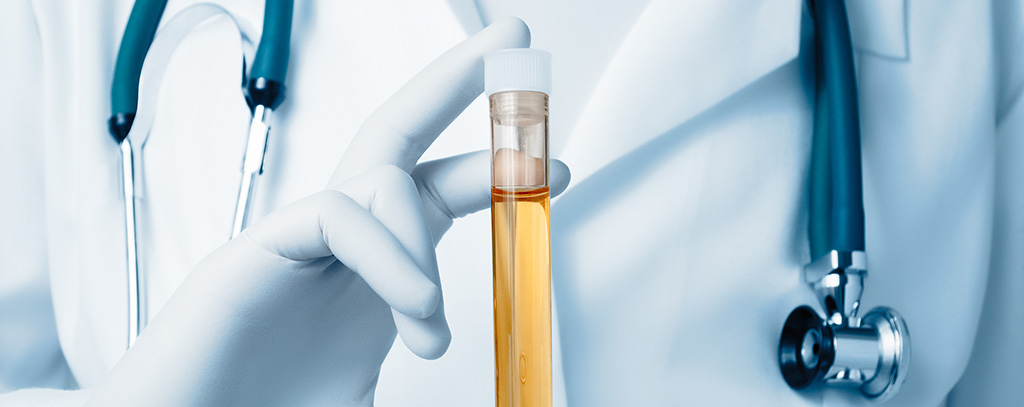


Promoting Safety: The Importance of Workplace Drug Testing
September 9, 2023


Implementing Oral Drug Testing in the Workplace: A Guide
September 11, 2023Ever wondered what the deal is with oral drug testing? You're not alone.
The world of oral drug tests can seem as murky and confusing as a dense fog. Don't fret, we'll lead you through this foggy terrain like a seasoned navigator on rough seas.
We'll guide you through this misty landscape like an experienced sailor navigating choppy waters. Let's go on a journey of discovery, delving into the details of how these tests function, their accuracy levels, the drugs they can detect and more.
You see it's not just about knowing what happens during an oral drug test; it's also understanding why that matters to you.
Ahead lies a journey filled with fascinating insights and practical takeaways - so let's dive in!
Table of contents
- Oral Drug Testing: A Glimpse into the Process
- Unraveling the Process: How Does Oral Drug Testing Work?
- Unveiling the Scope of Oral Drug Testing
- How Swift is the Process of Getting Results From an Oral Drug Test?
- What Makes Oral Drug Tests a Preferred Choice?
- What Are the Drawbacks of Oral Drug Tests?
- FAQs in Relation to Frequently Asked Questions About Oral Drug Testing
- Conclusion
Oral Drug Testing: A Glimpse into the Process
The world of drug testing has seen a variety of methods over the years, but one that stands out due to its non-invasive nature is oral drug testing. This process involves analyzing an individual's saliva sample for traces of specific drugs.
"A unique advantage with oral fluid-based tests lies in their ability to detect recent use more effectively than other forms like urine or hair follicle tests."
Behind the Scenes of Oral Drug Testing
To begin, let's explore the process in detail. It starts with collecting a saliva sample using an absorbent swab from under your tongue or inside your mouth. Then, lab experts get busy identifying any potential illicit substances within it.
- Detection capabilities can vary based on factors such as consumption levels and metabolism rates.
- Studies have shown most commonly abused drugs appear in saliva minutes after ingestion and remain detectable up to 48 hours post-consumption.
- This may differ depending on the substance involved though.
A Look at What Drugs Can Be Detected Through Saliva Tests
We've established that different types of drugs can be detected through this method, right? Common substances detectable through saliva testing include THC, COC, OPI, METH (including MDMA), AMP, BZO and alcohol; however it is important to note that this type of test only indicates recent drug use.
But remember, it's all about recent substance use detection here.
The Legalities and Use Cases of Oral Drug Testing
Not only is oral drug testing legal, it's also popular in many fields. Employers often favor it for pre-employment checks or random workplace tests to make sure safety comes first.
Unraveling the Process: How Does Oral Drug Testing Work?
Oral drug testing is a simple yet effective method that involves analyzing saliva samples for traces of drugs. This process is less invasive and respects individual privacy.
The appeal of oral drug testing lies in its simplicity. Unlike other tests that may require specific facilities or equipment, oral drug testing can be conducted anywhere.
Diving into the Collection Phase
An absorbent swab resembling a mini toothbrush is employed to take saliva from the interior of an individual's mouth. However, before this collection takes place, it is crucial for individuals to avoid eating or drinking anything for at least 10 minutes to ensure accurate results.
With just a swipe inside your cheek, the collection process is complete.
Moving onto Analysis
The collected sample then takes center stage as it undergoes thorough analysis in laboratory settings. Immunoassay techniques designed specifically for human body fluids are used to detect certain drugs or their metabolites present in our system.
If the initial test results suggest substance abuse, a more comprehensive confirmation may be done with GC/MS. Learn about detection times here.
Possible Culprits Detected by Saliva Test
- Cannabis Sativa - commonly known as Marijuana (THC)
- Cocaine - also referred to as 'coke' or COC
- Opiates - OPI which includes heroin and morphine among others
- A potent class of stimulants like Amphetamines/Methamphetamines(MAMP/MDMA)
- Benzodiazepines(BZO) - a class of psychoactive drugs
These are the usual suspects that oral fluid tests pick up, but remember other substances can also be detected. Click here to explore different types of drugs.
Unveiling the Scope of Oral Drug Testing
In a world where drug abuse is becoming increasingly prevalent, oral drug testing emerges as an effective solution. Oral drug testing not only serves as a deterrent, but also helps to identify and prevent potential misuse. So what drugs can be detected through this method? According to Drug Abuse, there are quite a few:
"Amphetamines, cocaine, marijuana (THC), opiates like heroin and morphine, phencyclidine (PCP) - all these illicit substances can be traced in one’s saliva."
This makes oral fluid tests vital tools for employers, law enforcement agencies, and medical professionals alike.
The Intricacies of Detecting Different Drugs
Different drugs have varying impacts on the body. Take amphetamines, for example – they stimulate the central nervous system, enhancing alertness, but misuse leads to serious health issues such as heart problems or stroke.
- Cocaine too has severe consequences, impacting brain function and causing intense feelings of happiness followed by depression.
- Marijuana or THC gives users a 'high' sensation, which many find enjoyable, but legalities around its use vary globally, making detection crucial.
- Opiates relieve pain, but their misuse leads to addiction with harmful mental and physical health impacts. (MedlinePlus)
- Lastly, PCP – a hallucinogen with the power to cause delusions – can have lasting impacts on mental health. (Drug Abuse)
The Power of Oral Drug Testing
Oral drug testing isn't just a detection tool. It's also a deterrent and an aid in prevention.
Accuracy in Oral Drug Testing: A Deep Dive
The question of accuracy is always paramount when it comes to drug testing. And when the method under discussion is oral drug testing, this topic becomes even more pertinent.
"The efficacy of an oral drug test can reach up to 99% if performed correctly."
In other words, the right procedures and handling can make all the difference in obtaining accurate results from these tests.
What Makes Oral Drug Tests Precise?
A key feature that contributes to their precision is the ability of these tests to detect recent substance use. Unlike hair or urine samples, which provide a longer detection window, saliva-based assessments are especially adept at detecting drugs consumed just hours prior.
- Detection Timeframe: Saliva tests excel at identifying very recent substance usage compared to other methods.
- User's Habits: The frequency and quantity of consumption significantly impact whether drugs will be detected during screening processes.
- Metabolism Differences: Individual metabolic rates vary greatly, affecting how quickly substances are processed by the body and influencing test outcomes as well.
Quality Matters in Test Supplies
In addition, there’s no denying that quality plays a crucial role here as well. When you're dealing with high-quality kits, they often have superior sensitivity levels, which translate into higher accuracy.
Pitfalls To Avoid For Accurate Results
While maintaining strict adherence to training protocols goes without saying for optimal performance from such precise tools like oral drug tests, there's also something else worth considering - occasional false positives or negatives may occur.
No test is infallible. But with the use of reliable testing supplies and proper administration techniques, these potential errors can be significantly minimized.
In essence, oral drug tests are highly accurate if handled correctly - a fact that makes them an invaluable tool in substance detection efforts.
How Swift is the Process of Getting Results From an Oral Drug Test?
The rapidity and simplicity of oral drug tests have made them a popular choice in many settings. So, how quickly can you expect results? Let's delve into it.
"Oral drug testing typically involves a quick swab collection from inside the mouth - taking just minutes to complete."
In essence, this swift procedure allows for on-site testing with minimal discomfort for those being tested.
The Speedy Yet Thorough Analysis
Once collected, samples are analyzed either immediately on-site or sent offsite to laboratories. The option depends upon specific needs and circumstances.
- Rapid detection kits provide instant-read results within minutes after sample collection.
- Laboratory-based methods like Gas Chromatography-Mass Spectrometry (GC-MS) might take between 24 hours up to several days due to transport times and lab processing queues. But they offer greater accuracy by confirming initial positive results through meticulous analysis.
Variations That Might Influence Timeframes
Certain factors could extend the time before receiving your oral drug test results back:
- If there’s any question about validity or integrity of a sample which requires retesting,
- While rapid tests yield immediate findings, they may occasionally produce false positives that need confirmatory lab tests - adding extra time to getting final outcomes,
The Substance Abuse and Mental Health Services Administration (SAMHSA), recommends all positive initial test results should be confirmed by more specific methods to ensure accuracy of the findings.
Therefore, while oral drug tests are swift and efficient, they also need to be accurate and reliable. A balance between haste and exactness is essential.
What Makes Oral Drug Tests a Preferred Choice?
When it comes to screening for drug use, oral tests have established themselves as a reliable, convenient and cost-efficient option. But what exactly sets them apart from other methods? Let's explore.
The Unmatched Accuracy of Oral Drug Tests
Oral drug tests are highly acclaimed for their precision in detecting recent use of drugs. They test for parent compounds—the actual substance consumed—which is a more direct indicator than metabolites produced after consumption.
This feature significantly reduces the chances of cheating on an oral fluid test since substances cannot be flushed out with water or masked by detox products as easily as urine samples could be. Studies back this up, showing that oral fluid testing provides reliable results across various classes of drugs.
The Ease-of-Use Factor
Apart from accuracy, another standout advantage is convenience. These non-invasive tests don't need special facilities or bathroom privacy—eliminating potential adulteration concerns and simplifying the collection process both for those administering the test and those taking it.
Besides, because these specimens can be collected right there at workplaces or educational institutions where such screenings often occur, productivity isn't hampered while safety standards are maintained simultaneously.
An Economical Solution
Last but not least, using oral drug tests proves to be a cost-effective choice. Compared to other methods like blood or urine tests that require additional resources in terms of collection, storage, and transportation, they're relatively low-maintenance.
Additionally, they allow immediate sample analysis, cutting down time and money spent on lab processing. This makes oral drug tests an economical choice without compromising on quality or accuracy—offering value not just for businesses but also healthcare providers.
What Are the Drawbacks of Oral Drug Tests?
Like any testing method, oral drug tests have their fair share of disadvantages. One major concern is the possibility of sample contamination or adulteration.
This occurs when substances such as food particles or drinks interfere with a saliva sample. In some cases, individuals might even attempt to tamper with the test results by using mouthwash or other chemicals - a process known as adulterating.
The Challenge of Short Detection Windows
In addition to potential contamination issues, another drawback of oral drug tests is the detection of drugs that quickly metabolize in saliva. Compared to urine or hair follicle tests, many drugs are detectable for a shorter time period in oral fluids.
In practical terms, this means that an individual could use a substance and pass an oral drug test simply because enough time has passed for it to be undetectable in their saliva. Sometimes, this detection window can be as short as 24-48 hours post-consumption, depending on the specific drug used.
Limited Range of Detectable Drugs
The last point worth mentioning is the scope of detectable drugs through salivary testing methods. Despite advancements allowing us to identify several illicit substances like marijuana and cocaine, certain types still manage to slip under the radar via these tests.
This limitation means that some synthetic drugs may not show up during an oral drug test, which would otherwise be detected through blood analysis methods.
In essence, while the convenient and non-invasive features of oral drug tests make them appealing choices for screening illicit substance usage, they do come with a few drawbacks as well. When deciding on the best testing method, it's crucial to weigh these factors against your specific needs and circumstances.
FAQs in Relation to Frequently Asked Questions About Oral Drug Testing
What do you need to know about mouth swab drug tests?
Mouth swab drug tests are non-invasive, quick, and can detect recent drug use by analyzing saliva for traces of drugs.
What is the most common false positive drug test?
The most common false positives in a drug test often come from over-the-counter medications like ibuprofen or certain antidepressants.
What does it mean when a mouth swab drug test turns blue?
If a mouth swab turns blue during an oral fluid test, it signifies that enough saliva has been collected for analysis.
What is the Intercept Oral Fluid Drug Test?
The Intercept Oral Fluid Drug Test is an FDA-approved laboratory-based screening tool used to identify specific illicit substances in human saliva.
Conclusion
Oral drug testing is a valuable tool for detecting recent drug use, offering precision and convenience. It is widely used in various fields, including employment and law enforcement. These tests excel in detecting recent substance consumption and provide rapid results, with accuracy rates of up to 99% when performed correctly. However, they are not without their drawbacks, including the potential for sample contamination or tampering, a short detection window for some drugs, and limitations in detecting certain synthetic substances. When considering oral drug testing, it is essential to weigh these factors against specific needs and circumstances to make an informed choice.





